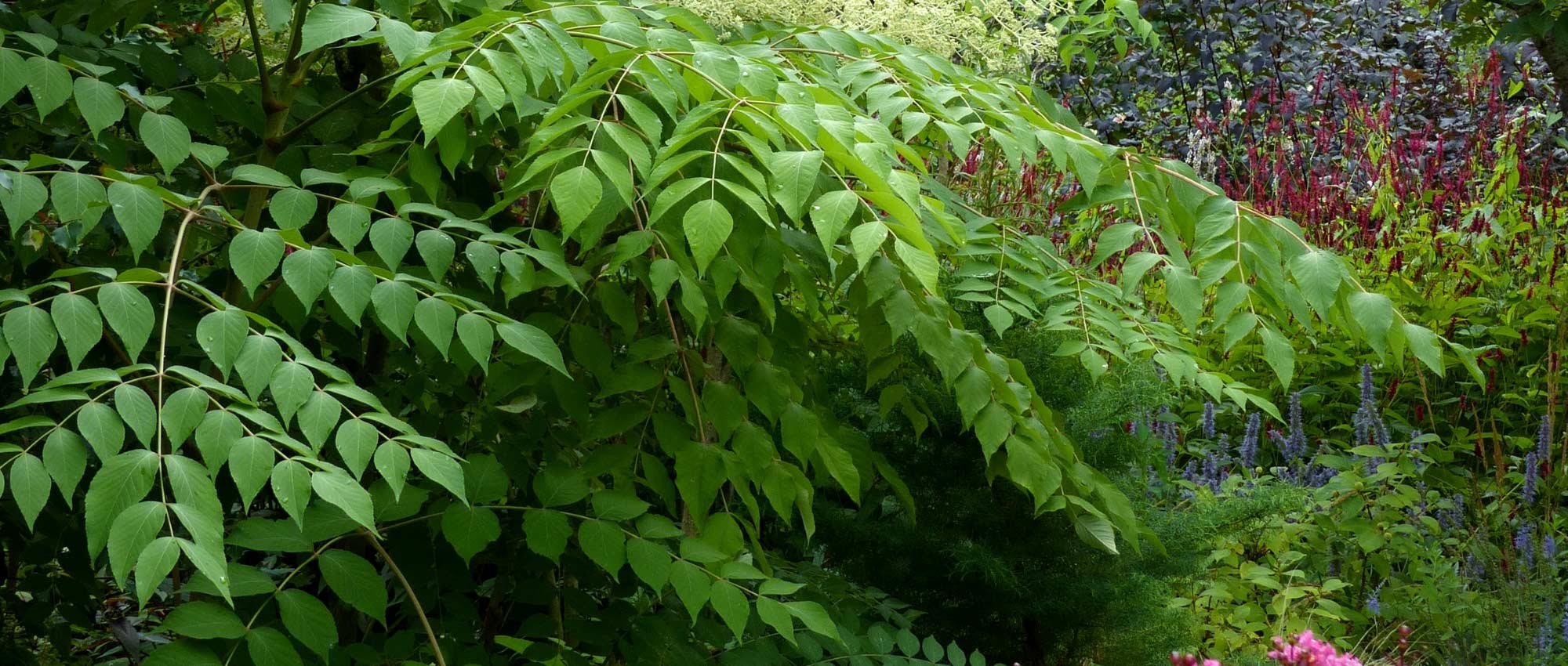
Aralia: planting, cultivation and care
Contents
Aralia in a nutshell
- Aralia elata is a tree with an elegant, majestic and spreading habit
- It has very beautiful, large divided leaves with a lush appearance that give the garden an exotic feel
- Airy flowering in large, ample white panicles and production of small black or deep purple fruits
- This plant is valuable for biodiversity, both for its melliferous flowers and for its fruits, which are enjoyed by birds
- Some varieties have golden or white-variegated foliage, adding a lot of brightness
A word from our expert
Aralia elata is a tree that takes an elegant silhouette, fairly pared-back, with thin, long branches sparsely ramified, bearing majestic, deeply divided foliage. It has large leaves divided into numerous ovate leaflets. Its very ample growth brings an exotic style to garden! Some varieties stand out for their original colouring: notably Aralia cordata ‘Sun King’, with golden, very luminous foliage; and Aralia ‘Silver Umbrella’, which bears green leaflets marginate with white. Aralia also offers a beautiful white flowering, in large panicles, creating a vapoury, very light effect. In autumn, flowers are replaced by small black or deep purple fruits, much appreciated by birds. Aralia is often confused with Fatsia japonica, commonly called “False Aralia”.
Aralia is a vigorous plant, fairly resistant and rather hardy. It thrives in partial shade, in fresh, rich, well-drained soil. It does not really need maintenance, apart from occasionally removing suckers that appear. Aralia brings an exotic, lush aspect to garden; ideal for recreating a “jungle” atmosphere. It also allows creation of a very natural area in understorey, in partial shade. It pairs very well with other plants with generous foliage: ferns, hostas, brunneras, Solomon’s seal…
Botany
Botanical data
- Latin name Aralia sp.
- Family Araliaceae
- Common name Aralia, Japanese Angelica-tree, Chinese Angelica
- Flowering August–September
- Height up to 10 m
- Sun exposure partial shade
- Soil type moist, well-drained, fertile
- Hardiness very hardy, tolerates temperatures below -15°C
The aralias include between 70 and 80 species of trees, bushes and herbaceous rhizomatous perennials. They are mainly found in Asia and North America. Aralia elata is native to eastern and northern Asia (Japan, Korea, Siberia, north-east China), while Aralia racemosa and A. spinosa come from North America. In the wild, aralias mainly grow in mountain forests. The most commonly cultivated species in gardens is Aralia elata, a deciduous tree with very decorative, divided foliage. It is vigorous and fairly hardy, but dislikes late frosts, which can damage its young shoots.
At a botanical level, Aralia has given its name to its own family, the Araliaceae, which comprises more than 1,500 species. This family includes other plants prized for their decorative foliage: Fatsia, Schefflera, Cussonia, Tetrapanax… but also, more common and less exotic, ivy (Hedera helix)! Indeed, flowers and fruits of Aralia californica resemble those of ivy. Ginseng (Panax ginseng) also belongs to this family.
In French, Aralia elata is called Angélique en arbre du Japon, or Angélique de Chine, because it originates from Asia and its foliage resembles that of Angelica; but Fatsia japonica is commonly called Japanese Aralia… Beware of confusion between these two genera! Only scientific Latin names reliably identify these plants. Likewise, Polyscias, a houseplant in the Araliaceae, is sometimes called “Balfour’s Aralia”. Aralia spinosa is also called Devil’s walking-stick, because of its thorns! In Latin, specific epithet A. elata means “tall”, while A. spinosa means “spiny”.
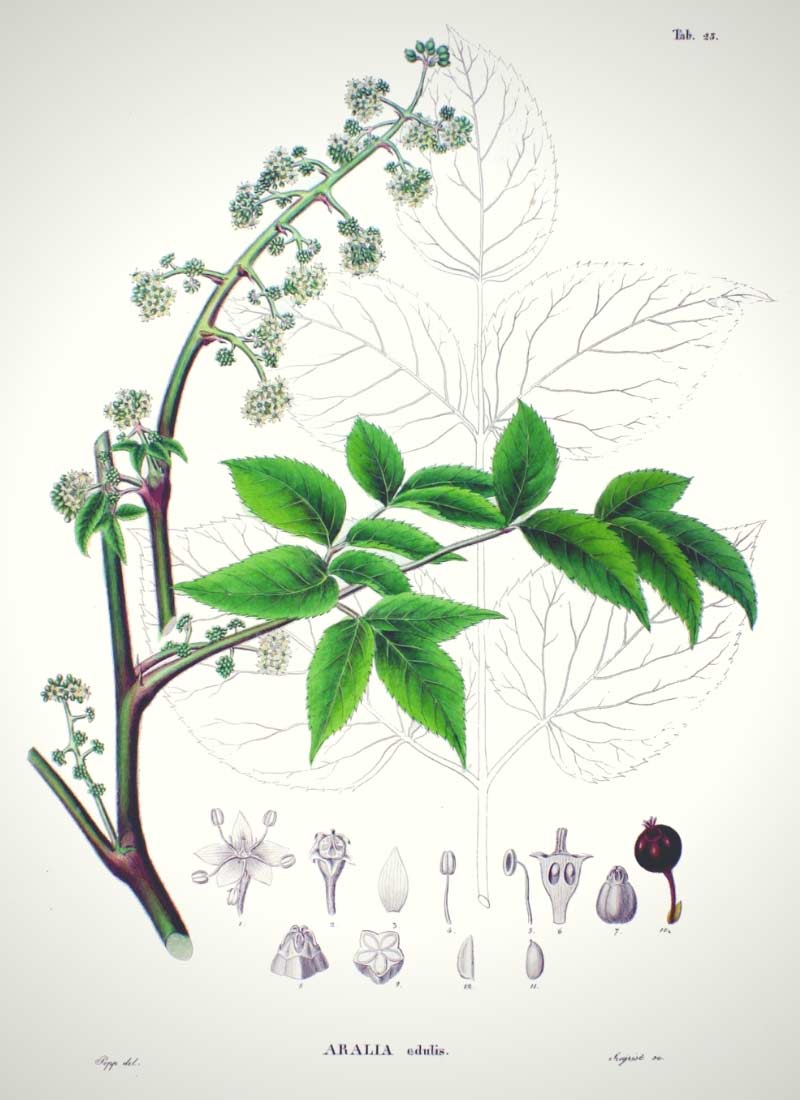
Aralia cordata: Botanical illustration
Generally, Aralia elata reaches 5–6 m in height, but can attain up to 10 m at full maturity. It grows fairly rapidly, and its crown can be as wide, since it is rather spreading. The tree has a distinctive silhouette: initially upright, it later develops a very elegant, umbrella-like shape. It is interesting to grow it as a specimen to fully appreciate it. Trunk is grey and rough, and bears thorns. Branches are fairly thin and elongated, long and sparsely ramified. Depending on how it is trained, Aralia can form a single trunk, or several (if you allow suckers to grow). When several trunks form, the effect is more natural and light, in coppice form.
But aralias are not all shrubby or arborescent; they also include herbaceous perennials that do not exceed 1.5–2 m in height. Aralia racemosa is a large, spreading and ramified perennial, much lower than other Aralia. A. californica is also an elegant perennial with lush foliage.
Aralia bears very large divided leaves, composed of numerous leaflets. They are truly decorative and give the plant a lush, exotic appearance! A. elata has earned the common name Angelica-tree or spiny Angelica because its leaves resemble those of Angelica, which also has finely divided foliage. Aralia leaves are bipennate, twice divided, and borne on a slightly reddish petiole. They are spiny, bearing small thorns along the foliar axes. Leaves of Aralia elata are pubescent on the underside. They are arranged in tiers and unfold at the top of bare branches, creating an umbrella-like effect. This inspired cultivar names such as ‘Golden Umbrella’ or ‘Silver Umbrella’.
Leaves of Aralia can reach between 1 m and 1.20 m in length! The leaflets composing them are ovate and small, with the lamina margin slightly dentate. They measure between 6 and 10 cm in length. A single leaf can bear 80 leaflets!
Aralia leaves are usually green, paler on the underside. However, several cultivars offer unusual hues! Aralia ‘Sun King’, for example, is distinguished by its superb golden foliage. Leaves can also be variegated, with the lamina margin irregularly marked with cream-yellow in ‘Golden Umbrella’, or white in ‘Silver Umbrella’. These coloured-leaf varieties are valuable for bringing light to a woodland garden in shaded situations.
In autumn, leaves of Aralia elata turn yellow–orange, even deep purplish red. Aralia is one of those plants that mark season’s end with flamboyant hues!
Aralia elata is deciduous: its leaves take beautiful autumn colours and then fall, producing new growth in spring. In general, most aralias cultivated in gardens are deciduous (A. spinosa, A. californica, etc.), but some species in nature are evergreen.

Leaves of Aralia spinosa (photo FD Richards), Aralia cordata ‘Sun King’, and Aralia elata ‘Silver Umbrella’
Aralia elata flowers in late summer–early autumn, around August–September (Aralia spinosa flowers a little earlier, sometimes from late spring). The plant then bears large, long inflorescences with a light, airy, vaporous appearance. These are panicles of umbels, gathering numerous small flowers, and appear on the year’s shoots in terminal position. Panicles of Aralia elata often measure 40–60 cm long; those of Aralia spinosa are a little larger. Flowering is white or creamy-white, sometimes slightly greenish, and flower stalks are reddish.
Individual flowers are tiny, about 3 mm in diameter, but very numerous and grouped in large inflorescences! Each small flower has five petals and also five stamens that carry the pollen. Flowers are melliferous, attracting pollinating insects, notably bees.

Flowering of Aralia elata (photo Katja Schulz) and of Aralia californica (photo Udo Schmidt)
These are followed by small globose fruits that appear in autumn. These are rounded drupes, 4–6 mm in diameter, usually black or dark purple. They are much appreciated by birds, which eat them and thus ensure seed dispersal (zoochory). You can harvest the fruits to retrieve the seeds inside and propagate Aralia by sowing. However, these seeds take quite a long time to germinate (up to six months!).
Species Aralia racemosa, commonly called American spikenard or simply Aralia with clusters, is decorative in the garden for its superb clusters of dark red–black fruits.
Aralia is an interesting plant for biodiversity, as its flowers are melliferous and its fruits are enjoyed by birds.

Fruits of Aralia cordata (photo Averater) and of Aralia racemosa (photo Kristine Paulus)
Aralia elata is sucker-forming: it produces shoots, new growth that develops from the roots. In this way it can spread and gain ground. It is possible to propagate the plant by lifting the suckers.
Main varieties of Aralia
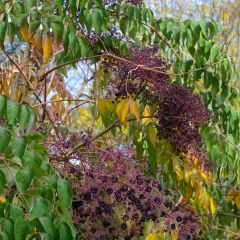
Aralia elata
- Flowering time October, November
- Height at maturity 5 m
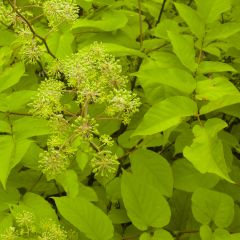
Aralia cordata Sun King
- Flowering time September, October
- Height at maturity 1 m
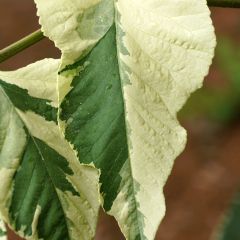
Aralia elata Silver Umbrella
- Flowering time September, October
- Height at maturity 5,50 m
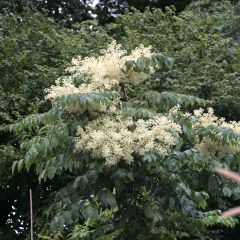
Aralia elata Golden Umbrella
- Flowering time September, October
- Height at maturity 2 m

Aralia spinosa
- Flowering time July to September
- Height at maturity 6 m

Aralia californica
- Flowering time August, September
- Height at maturity 2 m
Discover other Aralia
View all →Available in 3 sizes
Available in 2 sizes
Available in 2 sizes
Available in 2 sizes
Available in 1 sizes
Available in 1 sizes
Available in 1 sizes
Available in 1 sizes
Available in 1 sizes
Available in 2 sizes
Planting
Where to plant?
Plant Aralia preferably in partial shade, as it appreciates bright situations but dislikes scorching sun. Ideally it should have shaded exposure at least during hottest hours of afternoon. Exposure also depends on geographic location: you can place it in sun if you live in northern France, but prefer partial shade in southern France. In short, avoid extremes: scorching sun as well as thick, dense shade.
Aralia prefers soils rather rich in organic matter, fertile, humus-bearing. At planting, we recommend mixing some well-rotted compost into soil. Substrate must be light, deep and permeable; avoid heavy, compact ground. Aralia also likes cool, slightly moist ground. You can therefore install it near a water feature or a pond. However, substrate must still be well-draining. Aralia can tolerate some drought.
It is also important to choose a location sheltered from wind, as wind can damage foliage.
However, Aralia are not really sensitive to soil pH; they can grow on acidic or calcareous ground. In general, Aralia are not very demanding plants and can adapt to most garden soils. They also tolerate urban pollution fairly well.
Over time, Aralia develops a majestic, very elegant silhouette. It is interesting to plant it as a specimen, in middle of a short grass meadow, to showcase its architecture! Moreover, planting as a specimen makes it easy to spot and remove suckers that appear (which can be more problematic if you place it right next to a flowerbed).
As Aralia grows quite fast and spreads via its suckers, it can be used to reforest an area quickly. It brings tree cover fairly fast to a garden or space that was previously open and treeless.
Do not hesitate to plant Aralia in somewhat secluded areas of garden that you leave wild and rarely tend. You can let it develop naturally and spread a little; it will thus form a small grove.
When to plant?
You can plant Aralia in autumn (September–October) or in spring (around April). Plant when weather is relatively mild, outside periods of frost or intense heat.
How to plant?
- Begin by placing root ball in a basin filled with water to rehydrate it.
- Dig a hole large enough, about three times size of root ball.
- Add some well-rotted compost mixed with garden soil.
- Place root ball in planting hole. Ensure trunk is straight and soil level matches original substrate level when plant was in pot.
- Replace soil around and firm lightly.
- Water generously.
- You can apply mulch to help soil remain cool longer.
Continue to water in weeks following planting.
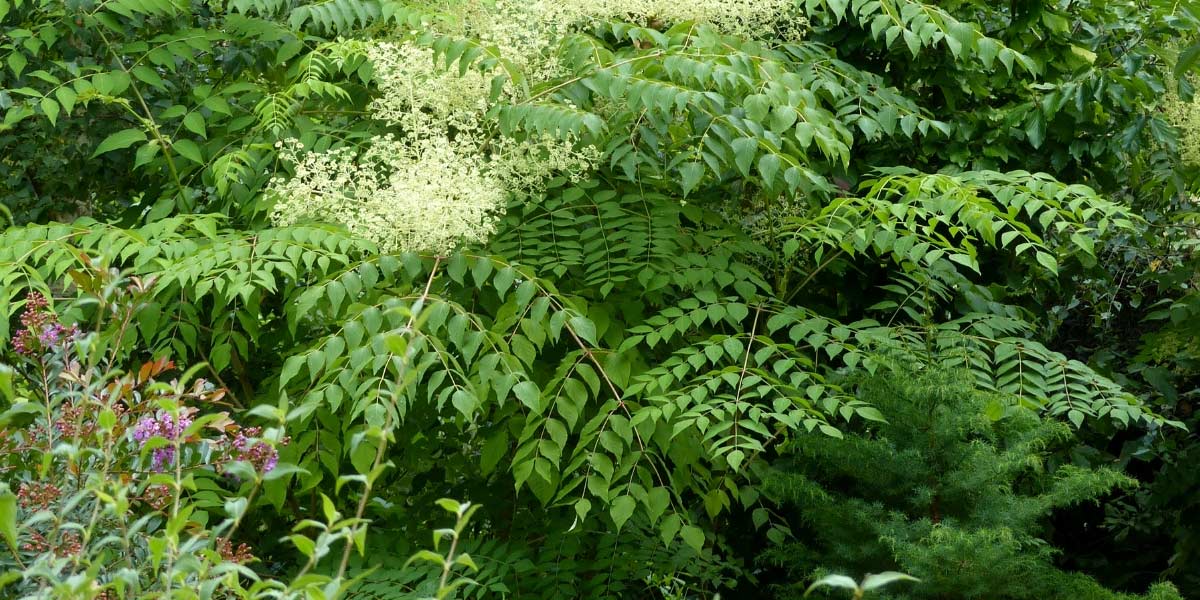
Aralia elata
Read also
Bamboos: plant, pruning, maintainMaintenance, pruning and care
Aralia does not really require care, except perhaps for occasionally removing any suckers that appear. It naturally develops an elegant, well-structured habit and does very well without pruning, but you can also intervene occasionally to remove some damaged or poorly formed branches, as well as any suckers.
If from an early age you regularly remove suckers, your Aralia will form a single trunk. If on the contrary you leave a few, it will develop several trunks and take on a lighter, more natural silhouette, in coppice shoots. Pruning of suckers and branches will therefore influence the plant’s overall silhouette.
You can water during the year of planting, and in case of exceptional drought. Likewise, you can occasionally place a little well-rotted compost at its feet to enrich the soil, and incorporate it superficially by light hoeing. However, if the soil is too rich and fertile, Aralia may become more fragile and less resilient.
Aralia is not prone to diseases and pests. It is sometimes attacked by aphids, but impact on plant remains fairly slight.
Propagation
We recommend propagating Aralia by taking the suckers it produces. It is also possible to sow seeds or to propagate from roots. Horticultural varieties with variegated, colourful foliage are usually propagated by grafting.
Removal of suckers
Aralia plants regularly produce shoots, or suckers, that develop on the roots of the mother plant. They can be separated to obtain new young plants. Do this preferably in late winter, around February or March.
- Choose a well-formed sucker that has grown beside an Aralia.
- Dig around to expose the root system.
- Cut the roots that connect it to the mother plant.
- Lift the sucker, keeping as many roots as possible.
- Prepare ground and replant it in a new location.
- Water generously.
Propagation by root cuttings
It is possible to propagate Aralia by root cuttings in winter (around December–January).
- Dig at the base of an Aralia to expose the roots.
- Take a root segment about 8 cm long, cutting it cleanly.
- Prepare a pot by filling it with a mix of potting compost and sand.
- Place the root segment vertically in the compost so the top of the root is level with the surface.
- Then water lightly.
- Place the pot under a cold frame.
Sowing
You can harvest the fruits to collect the seeds they contain and sow them in autumn. Preferably use fresh seeds harvested recently. They should be cold‑stratified, for example by placing them in the refrigerator for about 4 months. After that, sow them.
- Prepare a pot filled with fine, light seed compost.
- Firm surface so it is level and homogeneous.
- Sow Aralia seeds.
- Cover lightly with a layer of sieved compost, then firm.
- Water with a fine spray.
- Place the pot in a bright spot without direct sun, at around 20 °C.
Seeds take a long time to germinate (up to six months…!), so be patient! Once seedlings are large enough to handle, pot them on into individual pots. Keep them under cover for the winter, at least for the first year. You can then plant them in the garden (preferably in spring).
Association
With their large, highly divided leaves, aralias fit well into exotic-style gardens. You can pair them with other large, generous foliage such as Datisca cannabina, Gunnera, Fatsia japonica, Tetrapanax, Astilboides tabularis… Feel free to add bamboo and lianas: make use of Akebia quinata, passionflowers… you will obtain a sort of lush jungle! We especially recommend Aralia californica, that majestic perennial with imposing foliage. Also discover surprising flowering of Arisaema!
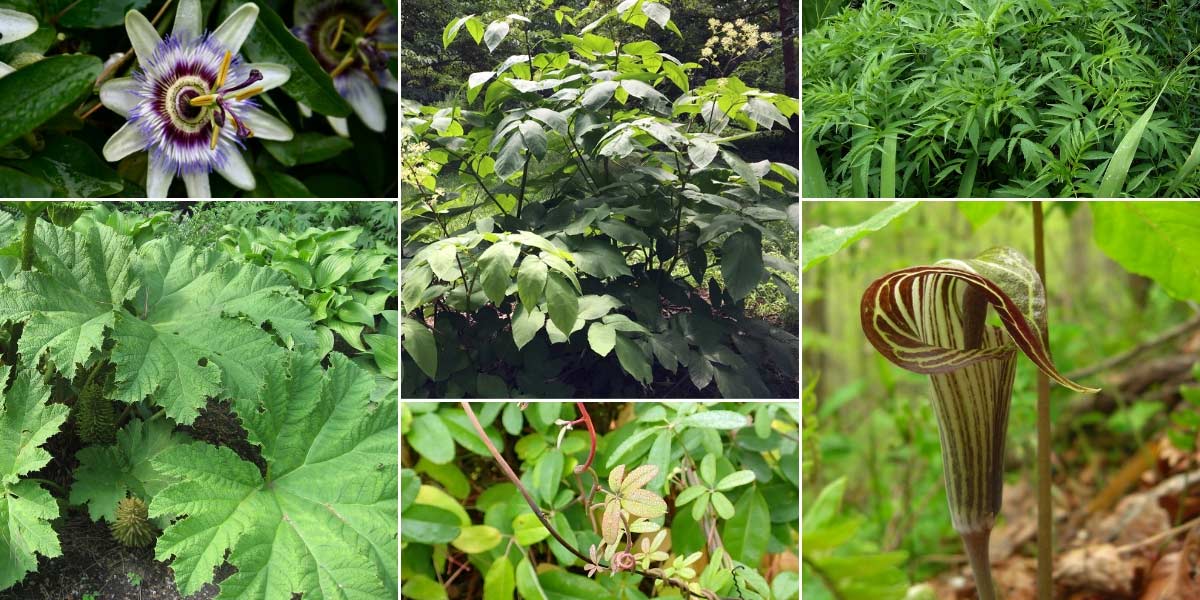
Aralias can fit into an exotic, lush garden, evoking a real plant jungle! Passiflora_caerulea (photo Fdbrumbl), Gunnera manicata (photo Dezidor), Aralia californica (photo Plant Image Library), Akebia quinata (photo Salicyna), Datisca cannabina (photo Peganum), and Arisaema triphyllum (photo Jason Hollinger)
Aralias are also perfect in shade gardens to recreate an understorey atmosphere that feels very natural (especially when they form several thin trunks and adopt a coppice-shoots habit!). Pair them with hostas, ferns, brunneras, Solomon’s seal, sweet woodruff, etc. Discover superb foliage of Paris polyphylla! Also enjoy flowering of Anemone nemorosa, bluebells (Hyacinthoides non-scripta), corydalis, Dicentra spectabilis, epimediums, Geranium nodosum… to bring small touches of colour! Also discover Cornus canadensis: a white-flowering groundcover with decorative foliage. You will obtain a natural, fresh garden that will give impression of a walk in a forest! Prioritise woodland plants that naturally occur in forests! For this type of garden, choose plants that require little maintenance, and small flowers that can naturalise. Regarding aralias, we especially recommend variegated varieties, as they are ideal to bring light into understorey! They will brighten darkest areas of your garden.
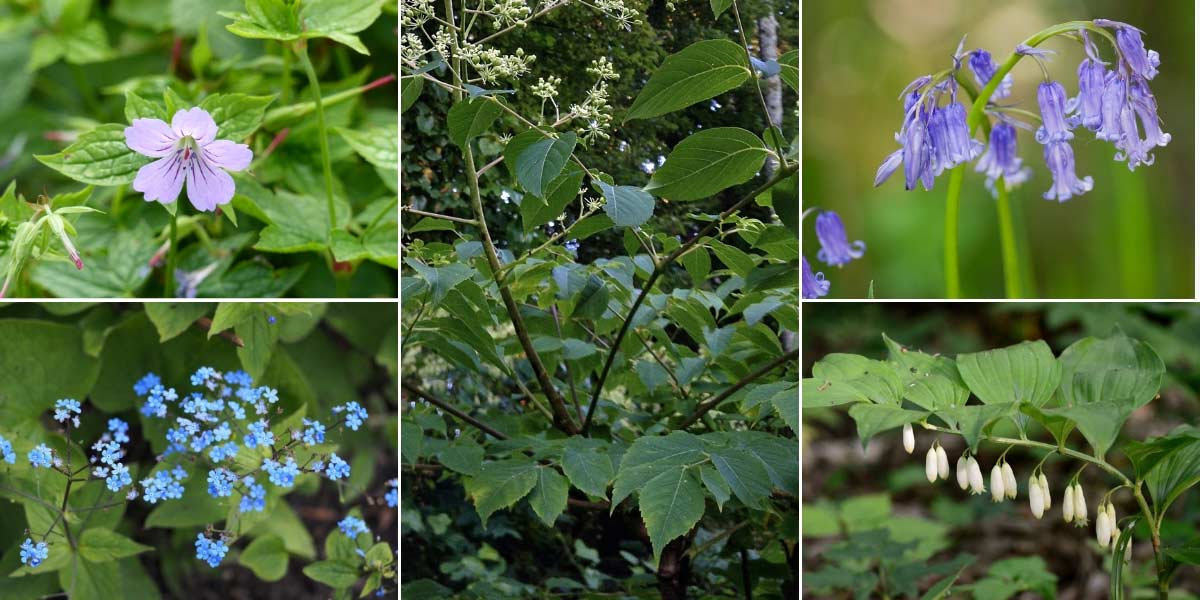
They also find their place in a naturalistic garden, to recreate an understorey atmosphere. Geranium nodosum, Brunnera macrophylla (photo Agnieszka Kwiecień, Nova), Aralia spinosa (photo Fritz Flohr Reynolds), Hyacinthoides non-scripta (photo Olivier Pichard), and Polygonatum latifolium (photo Radio Tonreg)
Don’t hesitate either to pair aralias with other plants that take beautiful autumn colours. Some trees and bushes offer at year’s end remarkable fiery foliage in red–orange–yellow–purple–bronze tones. Make use in particular of Nandina domestica, Japanese maples, Parrotia persica, Cercidiphyllum japonicum (caramel tree)… and don’t forget common dogwood, Cornus sanguinea, which also displays superb red-orange bark in winter. For a beautiful autumn atmosphere, you can also pair Aralia racemosa with other plants that provide decorative fruiting: spindle, Callicarpa, Viburnum opulus, Sorbus aucuparia… This will also have advantage of attracting birds to garden!
With its elegant, pared-back silhouette, sparsely ramified, Aralia brings a Japanese feel (…especially since A. elata originates from Asia and naturally grows in Japan!) it can easily be integrated into a zen garden. Pair it with Japanese maples, flowering cherries, Cornus kousa, Hakonechloa macra, hostas, horsetails, bamboo… You can add a few cloud-pruned pines and possibly some structured decorative elements: lanterns, pergola, fountain, wind chimes, small jetty, stepping stones… but without excess. Also leave plenty of room for mineral elements by adding gravel and a few rocks with interesting shapes. You will create an atmosphere favourable to meditation.
Don’t forget also that Aralia is magnificent as a specimen plant! This really highlights its silhouette, while allowing easy control of suckers.
Did you know?
- An edible and medicinal plant
Several Aralia species are edible and eaten in some Asian countries. Young shoots of Aralia cordata are mainly used (though A. elata is also edible), harvested in spring while still tender. They can then be blanched and eaten like asparagus, or fried. Moreover, Aralia cordata is also called Aralia edulis (synonym), and this species name, edulis, means “edible” in Latin. Similarly, fruits of Aralia racemosa are edible! Root of this species is also medicinal, effective against breathing ailments, asthma, colds, coughs… It is mainly used in homeopathy.
Useful resources
- Discover our range of Aralia
- Watch Olivier’s video on Japanese Aralia
- Discover our ideas for pairing Aralia in the garden
- Our advice sheet – Planting trees and bushes: What does the law say?
- Our video tips – Planting a bush
- To pair Aralia in the garden – 10 exotic and hardy plants for a jungle garden
Frequently asked questions
-
Fatsia or Aralia?
Although their common names are confusing (Japanese Aralia = Fatsia japonica), these two plants do not really resemble each other. Fatsia has large palmate leaves, whereas Aralia's are finely divided into small ovate leaflets.
-
Should suckers be removed?
Pruning suckers produced by Aralia limits its spread and gives a tidier, more controlled appearance. Suckers can be problematic if, for example, you have a perennial bed nearby, as Aralia can invade it and mingle with other plants. However, if your Aralia is planted at the back of your garden, in a fairly natural area, you can let suckers develop. It will then form more of a clump, with several trunks, creating a wild, natural effect. If you have the space and suckers do not interfere with neighbouring plants, you can leave them. Finally, suckers can also be useful for propagating the plant: you can lift them, separate them from the original young plant, and replant them elsewhere in your garden.
-
Should I prune Aralia?
Aralia naturally has an elegant, fairly uncluttered form, sparsely ramified; it can therefore do without pruning. Nevertheless, it is preferable to remove dead or damaged branches when you see them. Similarly, you can remove suckers.
- Subscribe!
- Contents
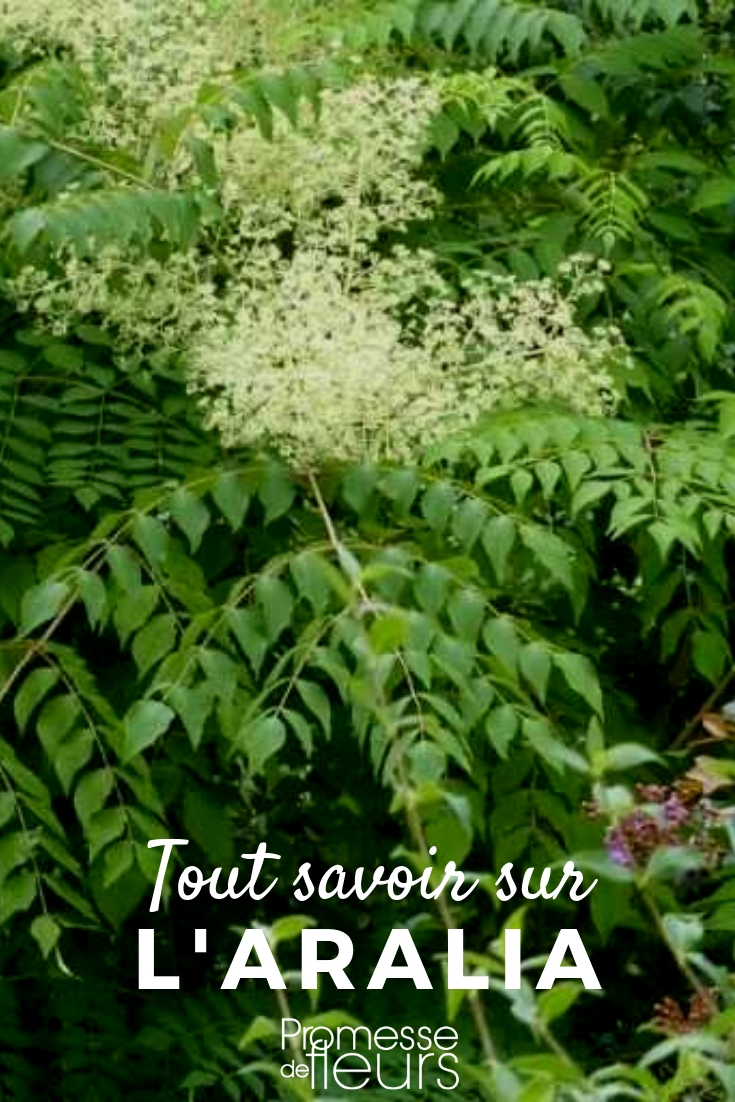































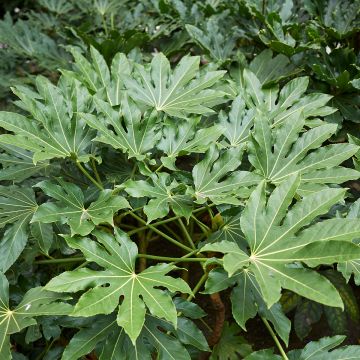

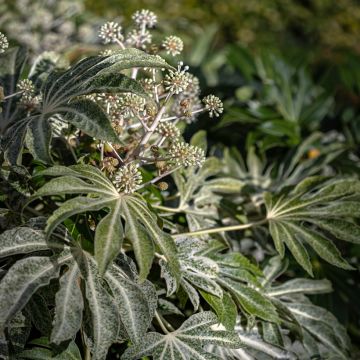

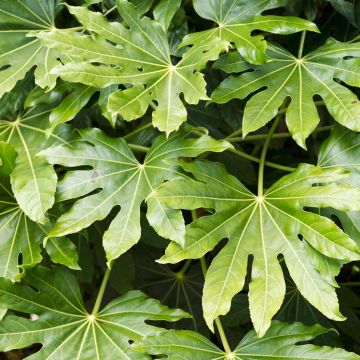

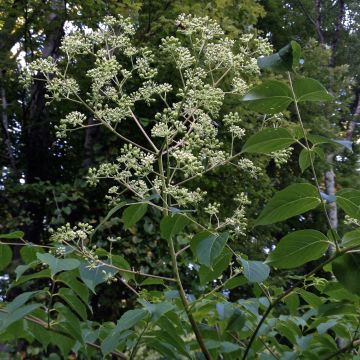
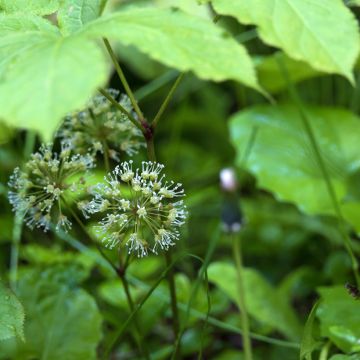
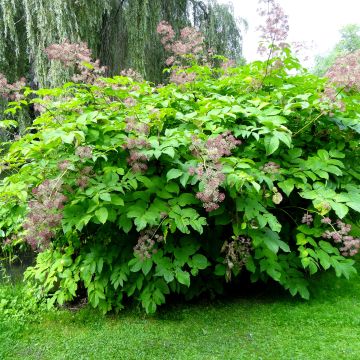
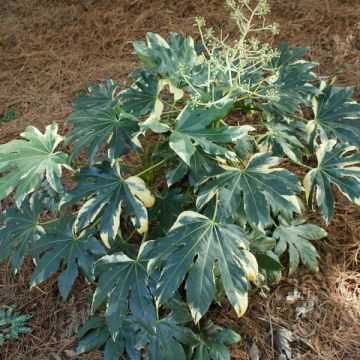
Comments